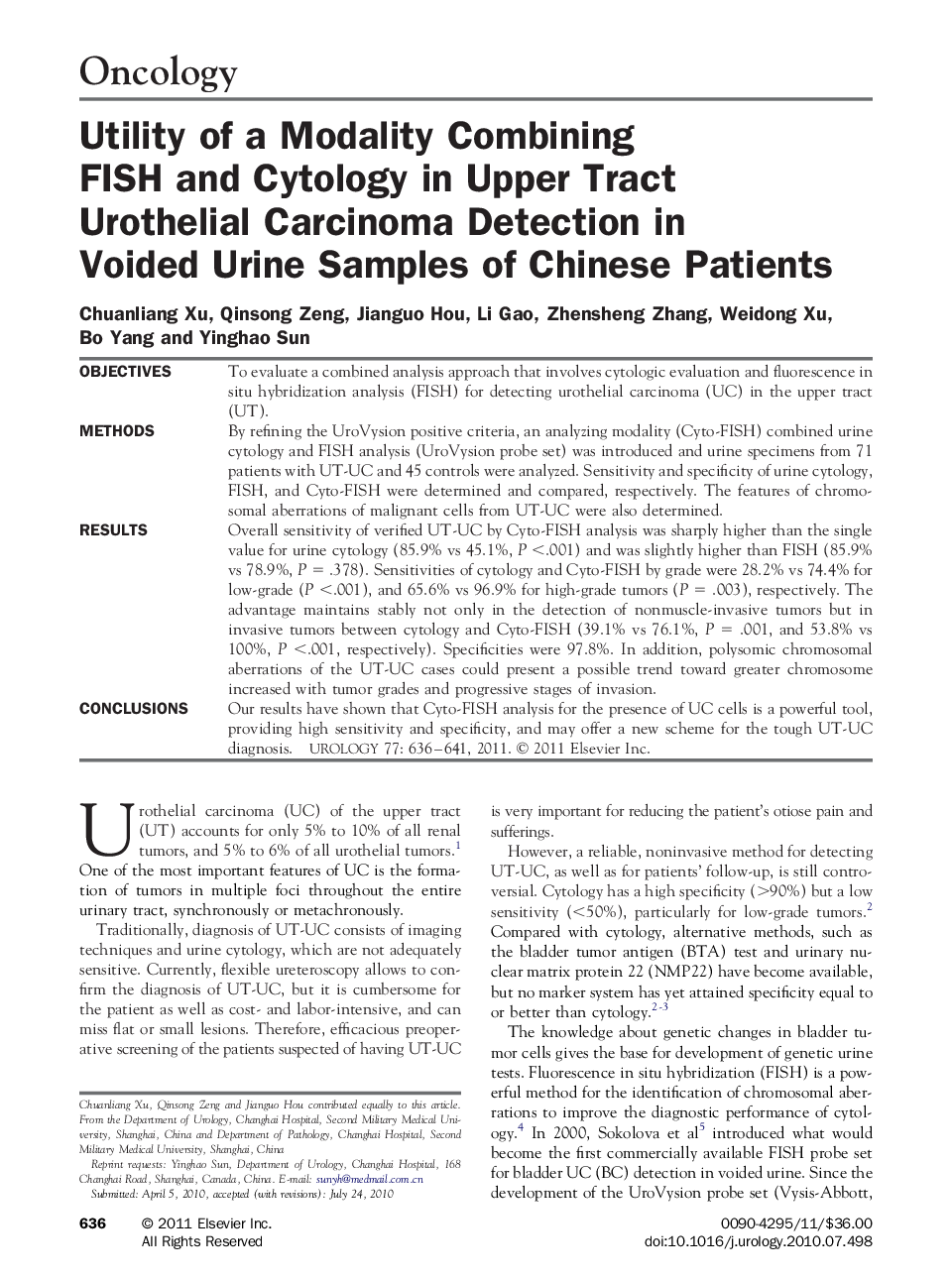| Article ID | Journal | Published Year | Pages | File Type |
|---|---|---|---|---|
| 3901248 | Urology | 2011 | 6 Pages |
ObjectivesTo evaluate a combined analysis approach that involves cytologic evaluation and fluorescence in situ hybridization analysis (FISH) for detecting urothelial carcinoma (UC) in the upper tract (UT).MethodsBy refining the UroVysion positive criteria, an analyzing modality (Cyto-FISH) combined urine cytology and FISH analysis (UroVysion probe set) was introduced and urine specimens from 71 patients with UT-UC and 45 controls were analyzed. Sensitivity and specificity of urine cytology, FISH, and Cyto-FISH were determined and compared, respectively. The features of chromosomal aberrations of malignant cells from UT-UC were also determined.ResultsOverall sensitivity of verified UT-UC by Cyto-FISH analysis was sharply higher than the single value for urine cytology (85.9% vs 45.1%, P <.001) and was slightly higher than FISH (85.9% vs 78.9%, P = .378). Sensitivities of cytology and Cyto-FISH by grade were 28.2% vs 74.4% for low-grade (P <.001), and 65.6% vs 96.9% for high-grade tumors (P = .003), respectively. The advantage maintains stably not only in the detection of nonmuscle-invasive tumors but in invasive tumors between cytology and Cyto-FISH (39.1% vs 76.1%, P = .001, and 53.8% vs 100%, P <.001, respectively). Specificities were 97.8%. In addition, polysomic chromosomal aberrations of the UT-UC cases could present a possible trend toward greater chromosome increased with tumor grades and progressive stages of invasion.ConclusionsOur results have shown that Cyto-FISH analysis for the presence of UC cells is a powerful tool, providing high sensitivity and specificity, and may offer a new scheme for the tough UT-UC diagnosis.
